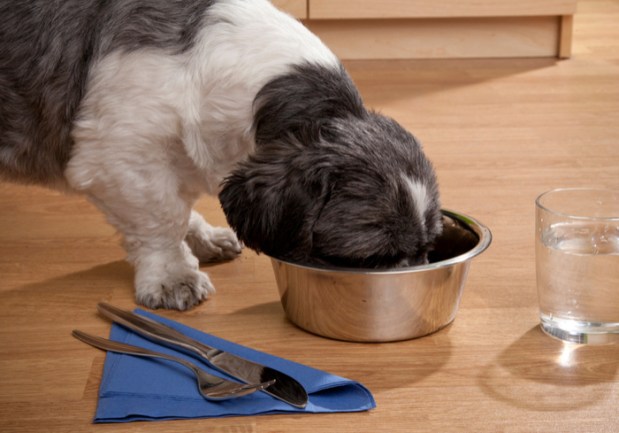Premium Pet Food Caters To Man’s Best Friend With Nutritious Meals

Man’s best friend is getting the best treatment. From dog hotels to pet boutiques, consumers are treating their pets like a member of a family when it comes to lodging and entertainment.
It would make sense, then, that dogs should get high-quality food that is not unlike what their dog parents would eat — and not some highly processed food from questionable sources with a few additives mixed in for good taste.
When Ollie Co-Founder Gabby Slome adopted her dog, Pancho, she realized a need for this type of product. She had done what she thought every good pet parent should do: She fed the dog high-quality kibble. It didn’t work out for her dog, which ended up having digestive and skin issues.
So she went on a wild goose chase talking to vets in search of a better diet for her dog. The vets recommended a home-cooked diet, which she did prepare. While Pancho did much better on the new diet, food prep was time-consuming. There had to be a better way, she thought.
Along with a co-founder whose dog, Belle, also had specific dietary needs, she founded Ollie. The company prepares fresh food for dogs based on plan tailored specifically to them based on a dog’s age, weight, breed and activity level.
The company feeds this information to an algorithm, which was developed with vets. And “that [provides] us your exact caloric portion that your dog needs on a daily basis,” Slome said.
A Dog’s Diet
A human diet differs from one of a dog in a key way: variety. Humans tend to eat many different foods throughout the day. But not so with our canine companions.
“Dogs tend to be the fed the same thing every meal,” Slome said.
As a result, it’s important that dogs have nutritional balance for each of their meals. And too much of one nutrient – such as Vitamin D or Vitamin K – can cause health problems for dogs.
To help consumers feed their dogs balanced meals, Ollie creates meals based on chicken, beef, turkey and lamb – with additional ingredients such as spinach or sweet potato.
The company isn’t limited to serving dogs with health issues: It serves dogs without ailments, too. And pricing varies depending on a dog’s needs, but subscriptions start at $3 a day for the full Ollie program.
To accept payments, Ollie uses credit cards, as they help facilitate its recurring service. In the future, Slome said the company would consider other payment methods if customers suggest them.
“We want to meet customers where they are,” Slome said.
After all, Ollie rolled out a snack line for dogs because that’s what their customers had suggested.
The Pet Food and Supply Market
Americans love their pets — and really love spending money on their furry companions. If there was any doubt about that, results from Amazon in 2017, where pet product category sales have grown by 40 percent, is a confirmation that pets are beloved even in online retail.
Amazon’s sales are an indicator of an overall robust category, according to Packaged Facts’ study, entitled “U.S. Pet Market Focus: The Amazon Pet Food and Supplies Shopper.” In fact, pet products make up one of the fastest-growing internet-based retail categories, Chain Store Age has reported.
The pet product category has grown by 45 percent between 2015 and 2017, based on the percentage of adults who had bought pet products via online retail channels over the preceding quarter. During 2016, Amazon sold $2 billion worth of products in its pet category, a 40 percent rise from the previous year.
Pet superstores, such as PetSmart and Petco, can capitalize on their established relationships with customers who know what to expect from their stores and services, while those offering non-medical pet services — such as grooming, boarding and training — can also stand out from their online competitors.
In addition, supermarkets are also working hard to hold on to their share of the pet market by increasing the size and scope of their pet care departments, sponsoring pet contests, running promotions and even filling pet prescriptions at stores with pharmacies.
The Road Ahead
Ollie has an advantage that other competitors may not have, Slome said: She and her co-founder, Alexandre Douzet, haven’t worked in pet food before.
“We have the benefit of not coming from the dog food industry, so we can see it in a whole new way,” Slome said.
When they started to grow the business, for example, it was a challenge to find nutritional experts that could help fill the Ollie mission. But this struggle was actually a competitive advantage.
Anyone could cook food, Slome said, but not many can do it at Ollie’s scale. After all, the company was developing its product for one and a half years before it started its beta test.
In the future, the company plans to scale up its offering for dogs. And what about food for feline companions? “If we get a lot of demand for cats, it’s something that we would consider in the future,” Slome said.
